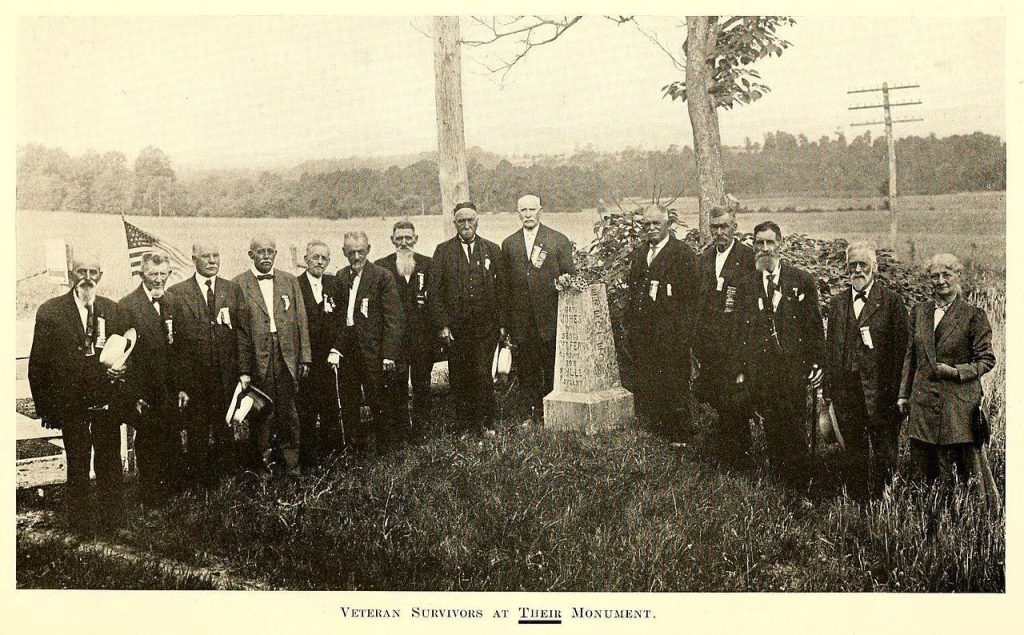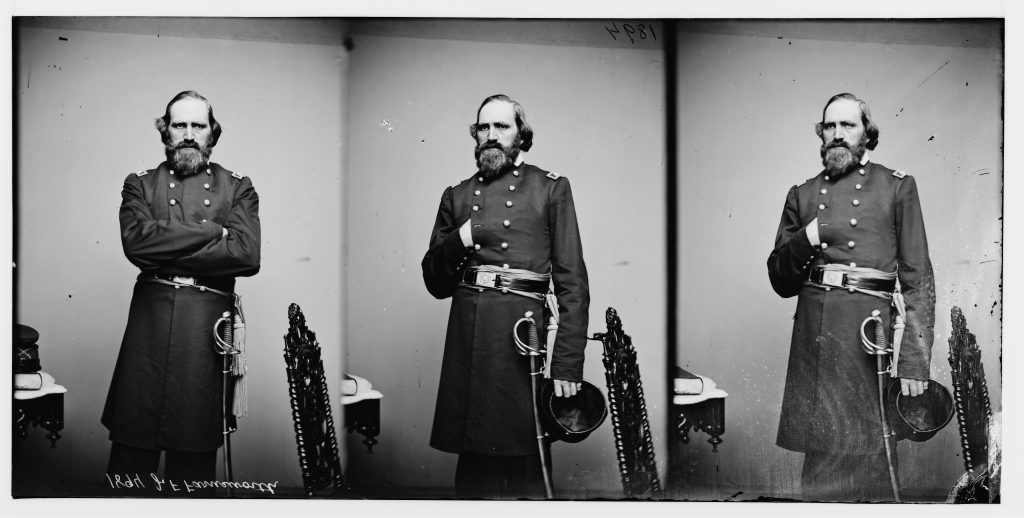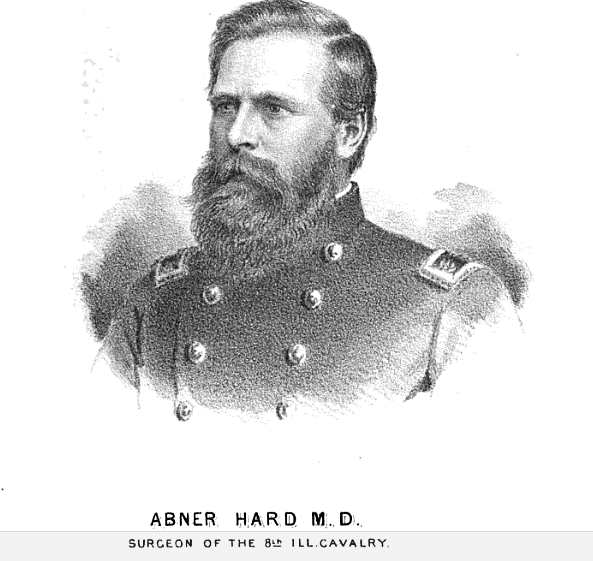Records Group 94 Feature: 8th Illinois Cavalry
Records Group 94 Feature: 8th Illinois Cavalry
Saddles, Carbines, and First Shots: The Story of the 8th Illinois Cavalry
When the Civil War erupted in 1861, men across Illinois answered President Lincoln’s call. Among them, those who enlisted in the 8th Illinois Cavalry would go on to carve out a remarkable history, full of daring raids, brushes with famous Confederate commanders, and even a claim to one of the most significant “firsts” of the war. Though not always in the spotlight, their story is one worth remembering—both for its heroism and for the human moments that shine through.
Early Days: A Regiment with an Edge
The 8th Illinois Cavalry was mustered into service in September 1861, pulling in farmers, merchants, clerks, and adventurous young men from across northern Illinois. They were unusual from the start, being issued breech-loading carbines, which gave them a faster rate of fire than many of their Confederate foes.
One soldier later recalled:
“Our breech-loaders gave us the power to strike quick and fall back before the enemy’s slow rifles could answer.”
That technological edge made the regiment a thorn in the Confederacy’s side from their first campaigns.
Gettysburg: The Shot That Sparked the Battle

The regiment’s most enduring claim to fame came on the morning of July 1, 1863, at Gettysburg. Lieutenant Marcellus E. Jones, borrowing a carbine from Sergeant Levi Shafer, fired the first shot of the battle.
Jones later reflected:
“I did not think of making history, only of doing my duty.”
That single shot helped set in motion the Union Army’s defense of the Pennsylvania crossroads town, and the regiment continued to screen, scout, and skirmish throughout the bloody three-day battle.
Soldiers’ Stories: Faces of the Regiment

John F. Farnsworth, 8th Illinois Cavalry. https://app.researcharsenal.com/imageSingleView/2282
Col. John Farnsworth – The Politician-Turned-Cavalryman
John Farnsworth, the regiment’s first commander, was a lawyer and politician before the war. Known for his fiery speeches in Congress, he traded words for weapons when he helped raise the 8th Illinois. Though not always a tactician of genius, Farnsworth’s charisma and drive helped mold the regiment in its early days.
Lt. Marcellus E. Jones – The Man of the First Shot
Jones’ name is forever tied to Gettysburg. What’s less known is that after the war, he returned to Illinois and became a judge. He attended veterans’ reunions faithfully, always modest about his place in history.
Capt. William Medill – A Fallen Leader
One of the regiment’s most poignant stories is that of Capt. William Medill, who was killed at the Battle of Malvern Hill in 1862. Medill was the brother of Chicago Tribune editor Joseph Medill, and his loss struck both the regiment and his influential family deeply. His death was a reminder that the war’s reach extended from battlefields to newsrooms and parlors back home.
Pvt. William F. Lyons – The Camp Humorist
Not every legacy was written in blood. Private William Lyons became known in the regiment for his jokes and antics. One comrade remembered:
“Lyons could turn the gloomiest camp into laughter. Even after a twenty-mile march, he’d find some jest to make us forget our sore feet.”
His humor was more than entertainment—it was survival for men who faced constant fatigue and danger.
Sgt. Levi Shafer – The Lender of the Carbine
Often overlooked, Sergeant Shafer deserves credit as the man whose carbine fired the first shot at Gettysburg—though in another’s hands. Accounts suggest he joked about it later, saying Jones “borrowed the honor along with my gun.”
Facing Stonewall Jackson and J.E.B. Stuart
The 8th Illinois crossed paths with some of the Confederacy’s greatest commanders. They tangled with Stonewall Jackson’s forces in the Shenandoah Valley, and often sparred with J.E.B. Stuart’s cavalry.
One trooper wrote of the nerves these encounters demanded:
“To fight Stuart was to fight the wind. One moment we thought him far off, the next he was upon our flank.”
Against such opponents, the Illinois men learned to be cautious, quick, and clever.
Camp Life: Humor Amid Hardship
Cavalry life was grueling. Horses needed care before the men themselves, food was often short, and disease lurked everywhere. Yet soldiers made the best of it.
One diary notes:
“We staged a mock parade, strutting like peacocks until even the colonel laughed.”
Moments like these carried the men through endless nights in fields and barns, when war felt far from glorious.
Raids, Risks, and Narrow Escapes
The regiment became adept at raiding behind enemy lines—cutting telegraph wires, seizing supplies, and spreading confusion. But raids were perilous.
As one officer admitted:
“It was a game of hours. Delay meant capture, haste meant ruin of our mounts. Raiding was not grand, but desperate work.”
The 8th Illinois survived many close calls, often escaping capture by sheer grit.
The Toll of War
The price was high. Disease, exhaustion, and combat steadily thinned their ranks. Soldiers mourned not just their comrades but also their horses, with whom they shared a unique bond.
One letter home captures this attachment:
“I pray my horse may live to see Illinois pasture. He has borne me as true as any friend.”
These words show how intertwined man and mount were in the cavalry experience.
After the War: Guardians of Memory
When the war ended at Appomattox, the 8th Illinois Cavalry returned home with honor. But they did not let their story fade. Veterans became active in preserving battlefields, attending reunions, and sharing their history.
At one gathering, a veteran declared:
“We fired the first shot, aye, but we also bore the long burden. Let no man forget that Illinois riders held fast from first to last.”
The 8th Illinois Cavalry’s history is more than a string of dates and battles—it’s the lived experience of men like Jones, Medill, Lyons, and Shafer. Some made history in famous moments, others in laughter or sacrifice, but together they formed a regiment that left its mark on the Civil War.
Their story reminds us that behind every regiment number are names, faces, and lives—ordinary men who carried themselves with extraordinary courage. And sometimes, history itself can turn on the squeeze of a trigger, on a borrowed carbine, on a quiet Pennsylvania morning.
The Research Arsenal has the complete records of the 8th Illinois Cavalry from Records Group 94 held at the National Archives, available to view online. Simply click on “Search NARA Records” on the homepage, then select “RG 94” as the call number.

The information in this post was pulled from the “History of the Eighth Cavalry Regiment, Illinois Volunteers, During the Great Rebellion” by Abner Hard, M.D. published in 1868. You can view a PDF of that book via the Library of Congress HERE

